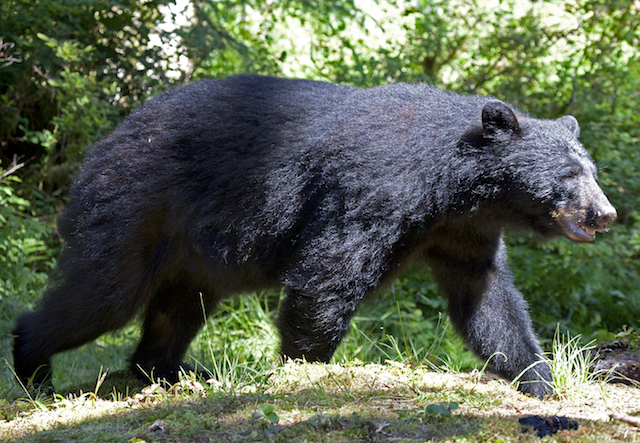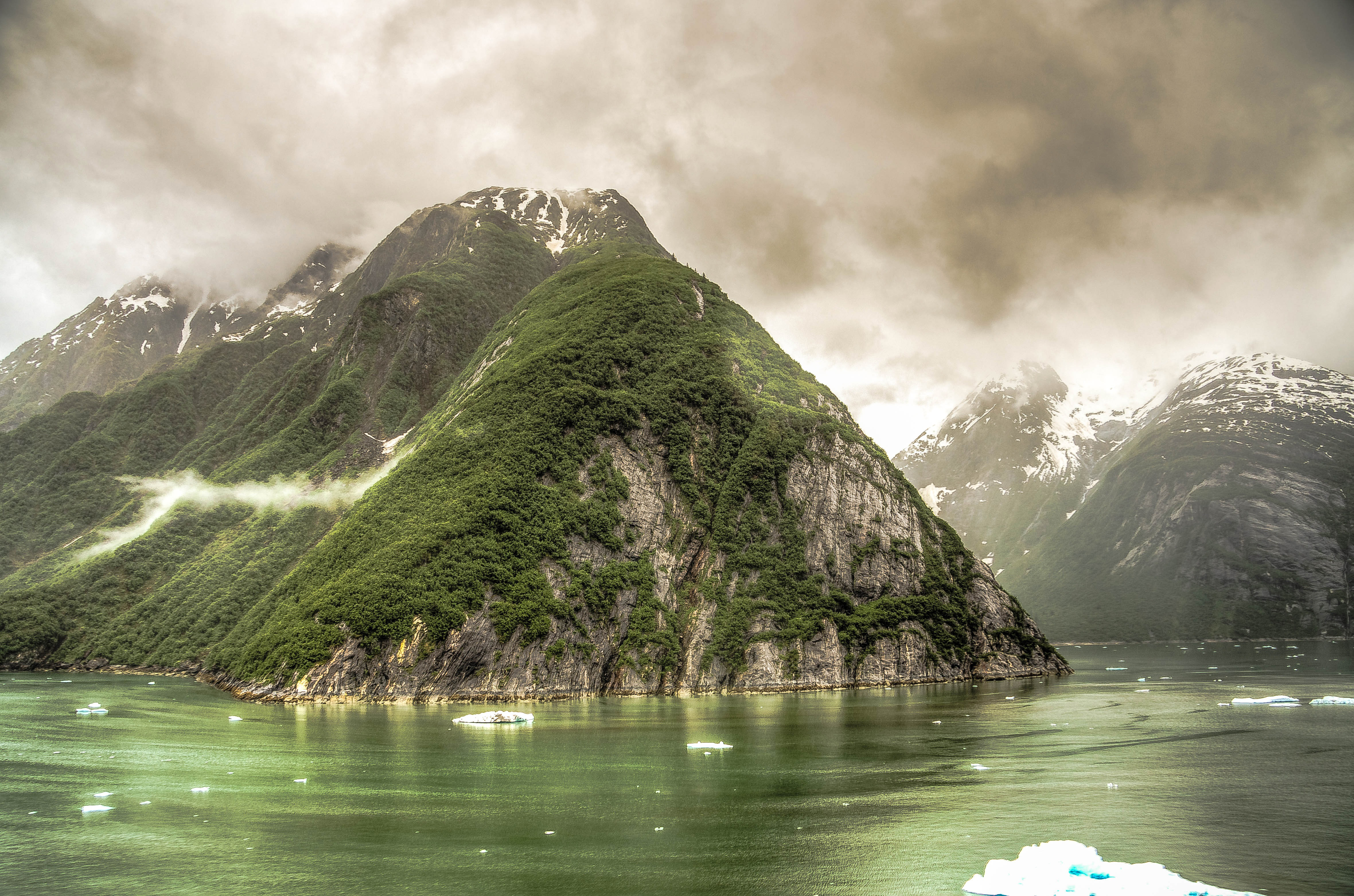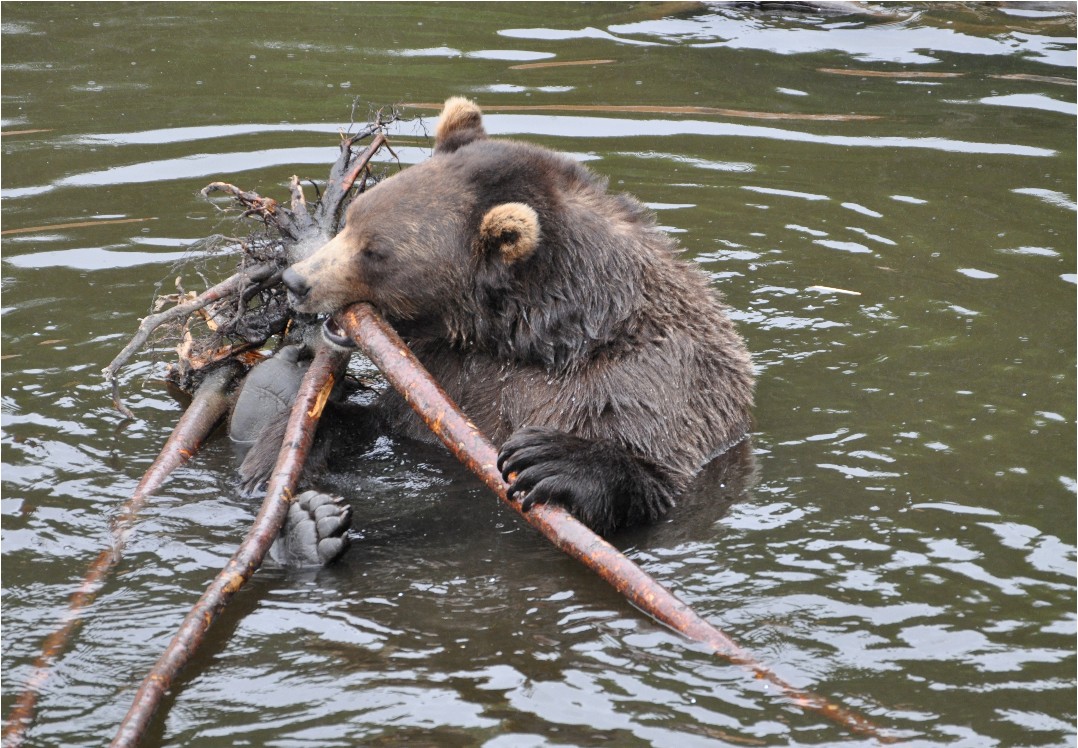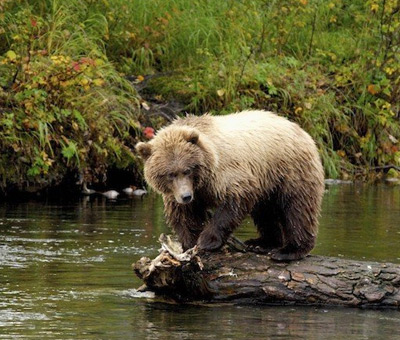Last Updated: Dec 17, 2025
Both brown (grizzly) and black bears live in Alaska, but, despite their names - color isn’t a good indicator of which is which. Black bears in southeast Alaska are indeed usually black, or black-ish, but in other parts of the state they can be brown, cinnamon, and even white!
Brown bears are usually the bigger of the two, growing up to 1,500 pounds. Brown bears in southeast Alaska tend to be larger than those in Alaska’s interior (and the few left in the lower 48) due to plentiful salmon runs in that part of the state.
Smaller brown bears are usually 500-900 pounds and black bears generally come in at 200-500. They also fluctuate in size due to hibernation and the feasting than fasting that it calls for, so size isn’t the best indicator either.
The best ways to differentiate result from the differences in their diets and lifestyles. Brown bears have long nails (2”-4”) for excavating burrowing animals out of their holes, and a large hump on their back from the strong muscles that also allow them to do so.
Black bears have shorter nails (1.5”) which help them to climb trees, not a brown bear’s forte. Both are very fast runners, but black bears are the fastest at 30 miles per hour. (Apt time for a reminder: NEVER run from a bear!)
When you spot bear tracks, you can tell which bear was there by looking at the front track’s outside toe-prints. If the outside toe is aligned with the inside toe, it’s a brown bear. And if the print is below the inside toe, it’s a black bear.
Black bears’ ears stick straight up, they are more prominent than in brown bears. They also have a straight “Roman nose” facial profile, while brown bears have a concave or “dished” profile.
Both types of bears are found throughout forested areas in Alaska, though generally not in the same places. Brown bears are more populated (and larger) in the southern coast, due to the aforementioned salmon feasts.
They do have a few things in common. Though black bears aren’t likely to nab a caribou, as a large brown bear can, both have omnivorous diets that take advantage of the flora and fauna around them. Both types spent 6-8 months heavily feeding in preparation for the lean winter.
They spend the winter in hibernation, which doesn’t mean that they sleep all the time, but that that they don’t need to eat or drink and that they stay in their dens. The best time to spot bears is in the spring and summer, while they are preparing for this time, often seeking food near water sources.

 Mendenhall Glacier
Mendenhall Glacier Whale Watching
Whale Watching Dog Sledding
Dog Sledding Salmon Bake
Salmon Bake Helicopter
Helicopter Kid-Friendly
Kid-Friendly Kayak
Kayak Adventure
Adventure Train
Train Yukon
Yukon Rafting
Rafting Misty Fjords National Monument
Misty Fjords National Monument Boat
Boat Fishing
Fishing Bear & Wildlife
Bear & Wildlife Animal & Wildlife
Animal & Wildlife



